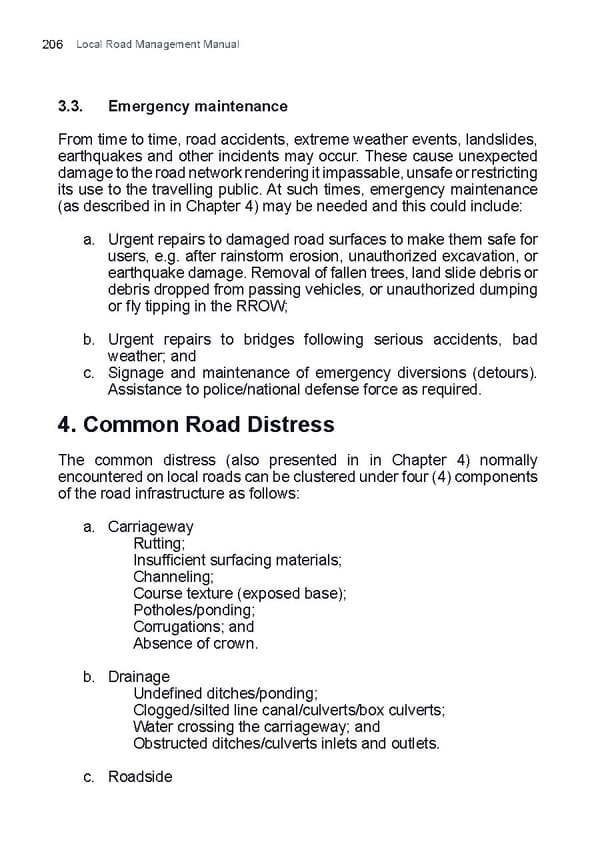Local Road Management Manual 206 3.3. Emergency maintenance From time to time, road accidents, extreme weather events, landslides, earthquakes and other incidents may occur. These cause unexpected damage to the road network rendering it impassable, unsafe or restricting its use to the travelling public. At such times, emergency maintenance (as described in in Chapter 4) may be needed and this could include: a. Urgent repairs to damaged road surfaces to make them safe for users, e.g. after rainstorm erosion, unauthorized excavation, or earthquake damage. Removal of fallen trees, land slide debris or debris dropped from passing vehicles, or unauthorized dumping or fly tipping in the RROW; b. Urgent repairs to bridges following serious accidents, bad weather; and c. Signage and maintenance of emergency diversions (detours). Assistance to police/national defense force as required. 4. Common Road Distress The common distress (also presented in in Chapter 4) normally encountered on local roads can be clustered under four (4) components of the road infrastructure as follows: a. Carriageway Rutting; Insufficient surfacing materials; Channeling; Course texture (exposed base); Potholes/ponding; Corrugations; and Absence of crown. b. Drainage Undefined ditches/ponding; Clogged/silted line canal/culverts/box culverts; Water crossing the carriageway; and Obstructed ditches/culverts inlets and outlets. c. Roadside
 Local Road Management Manual Page 206 Page 208
Local Road Management Manual Page 206 Page 208